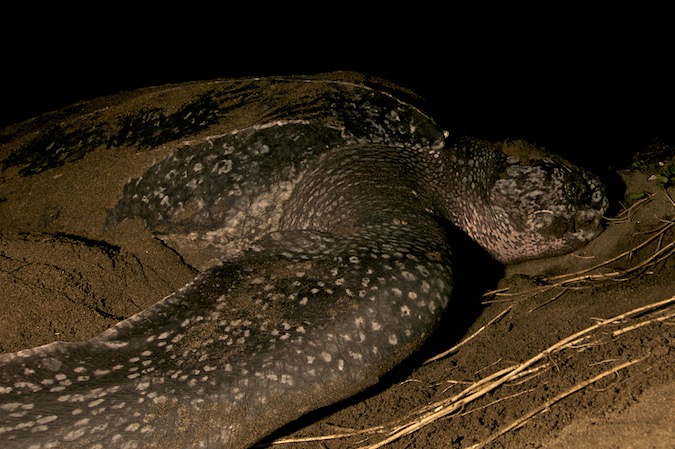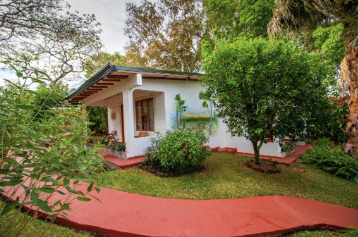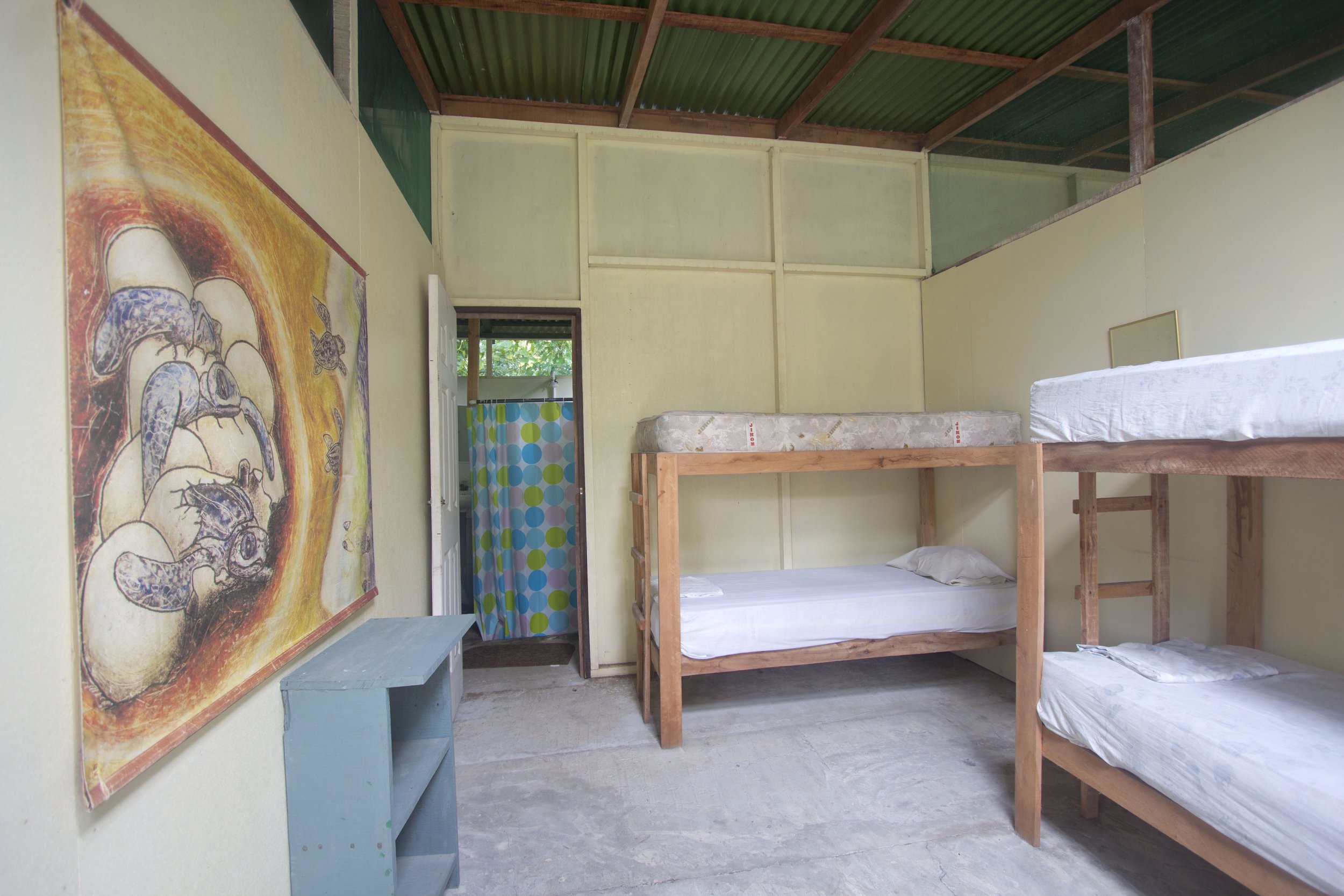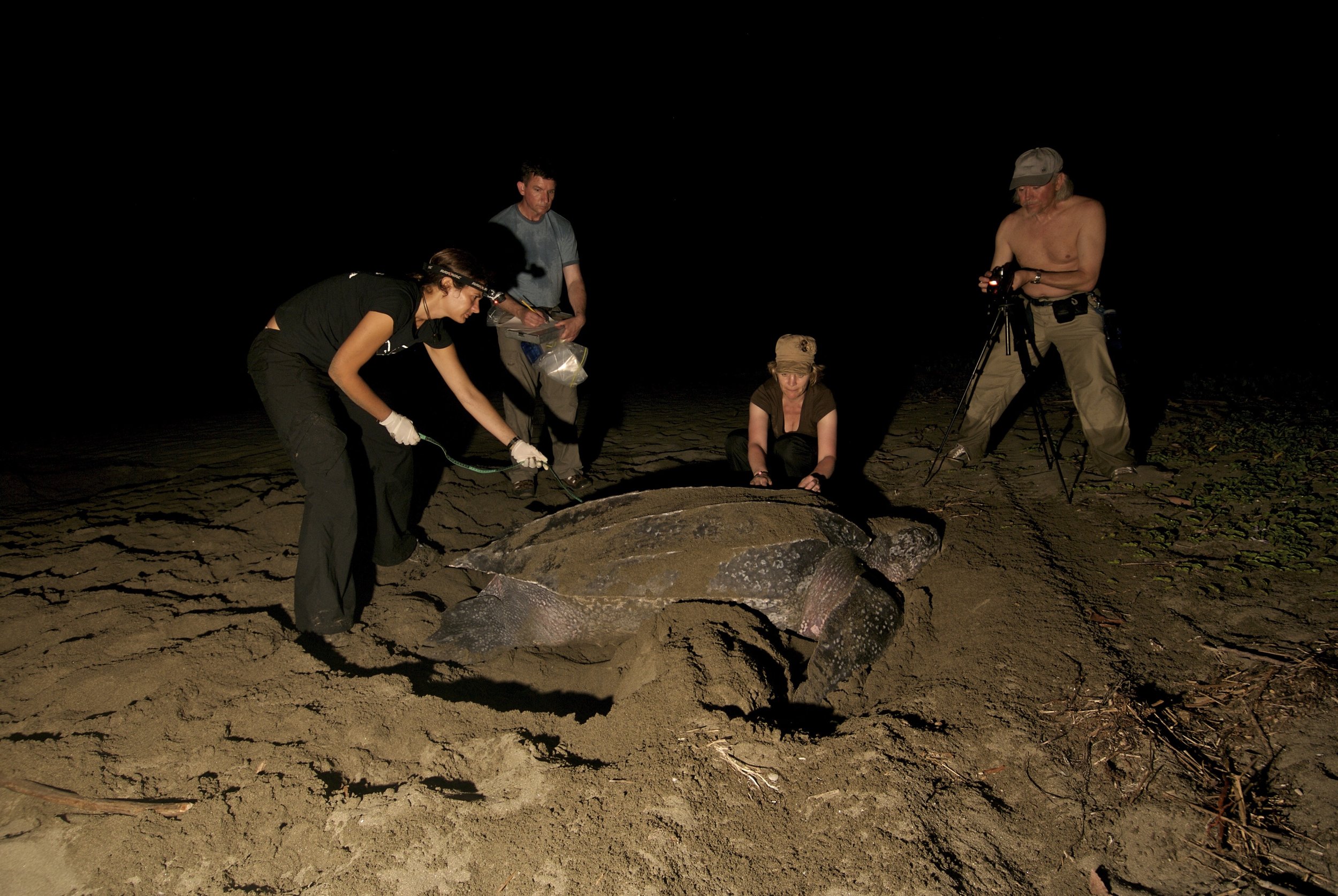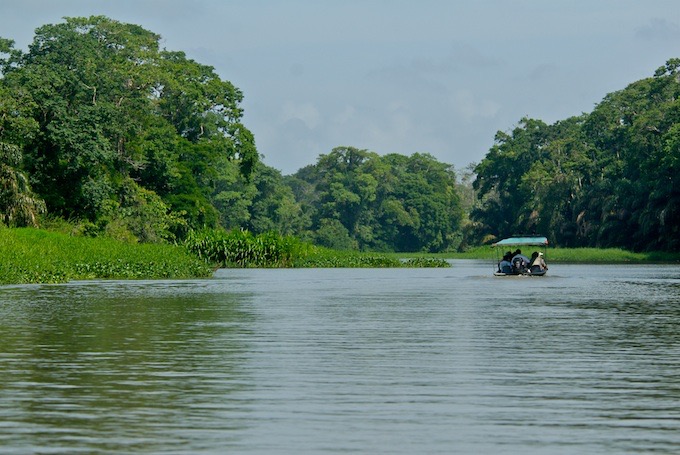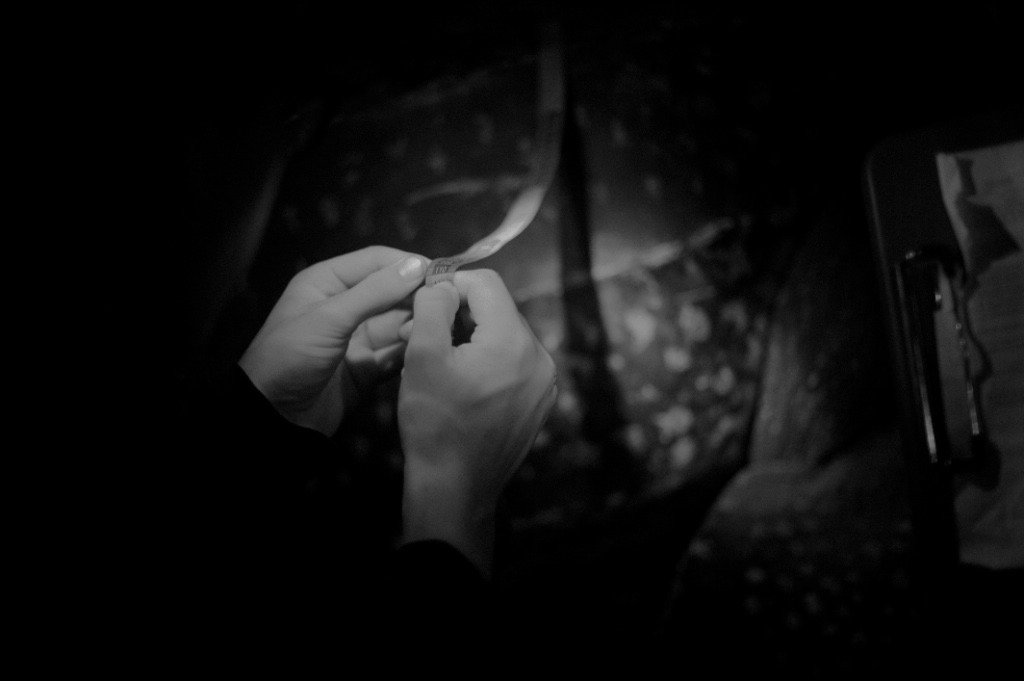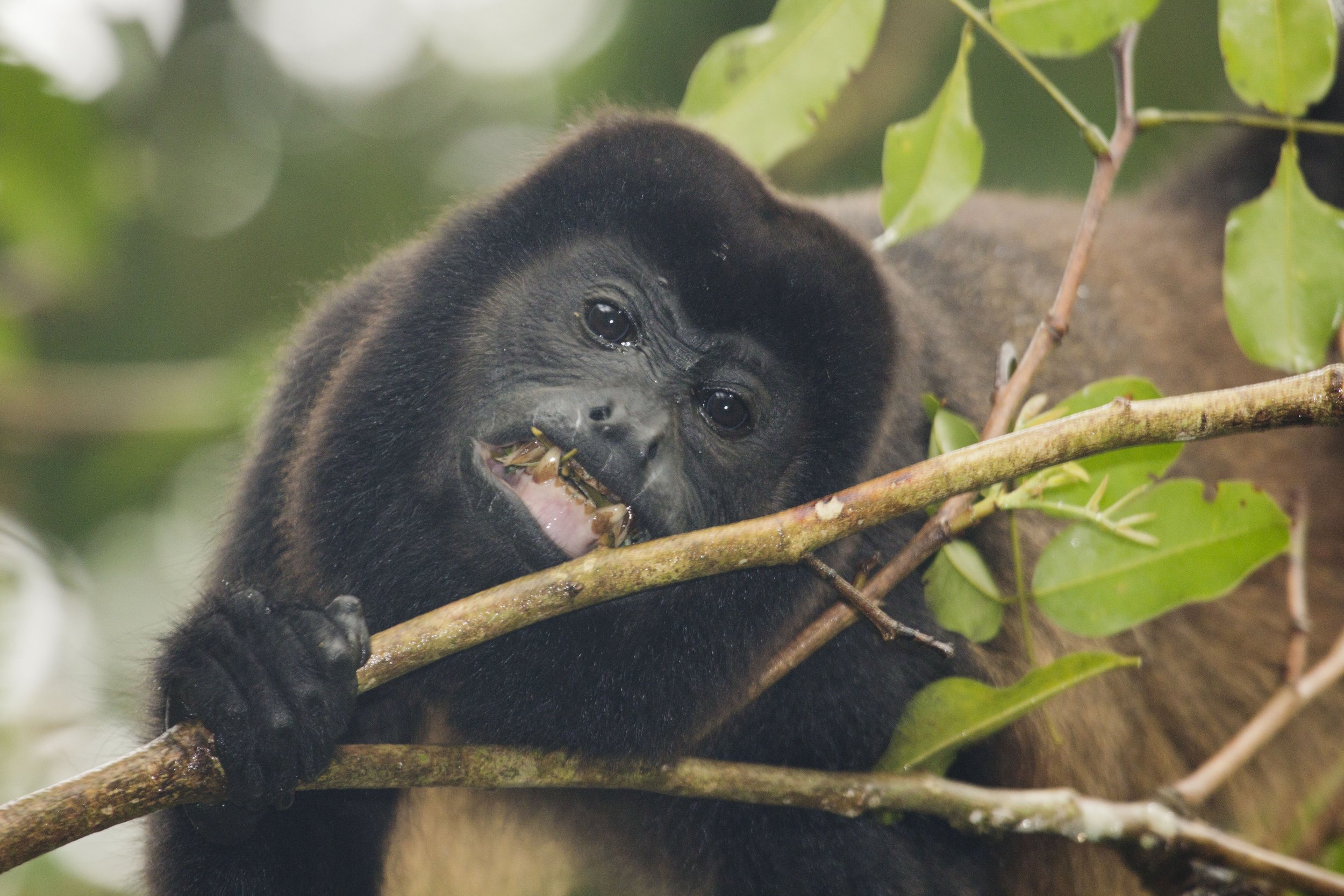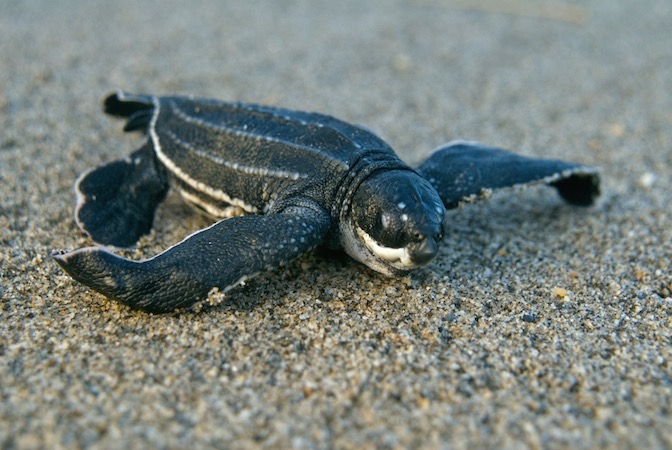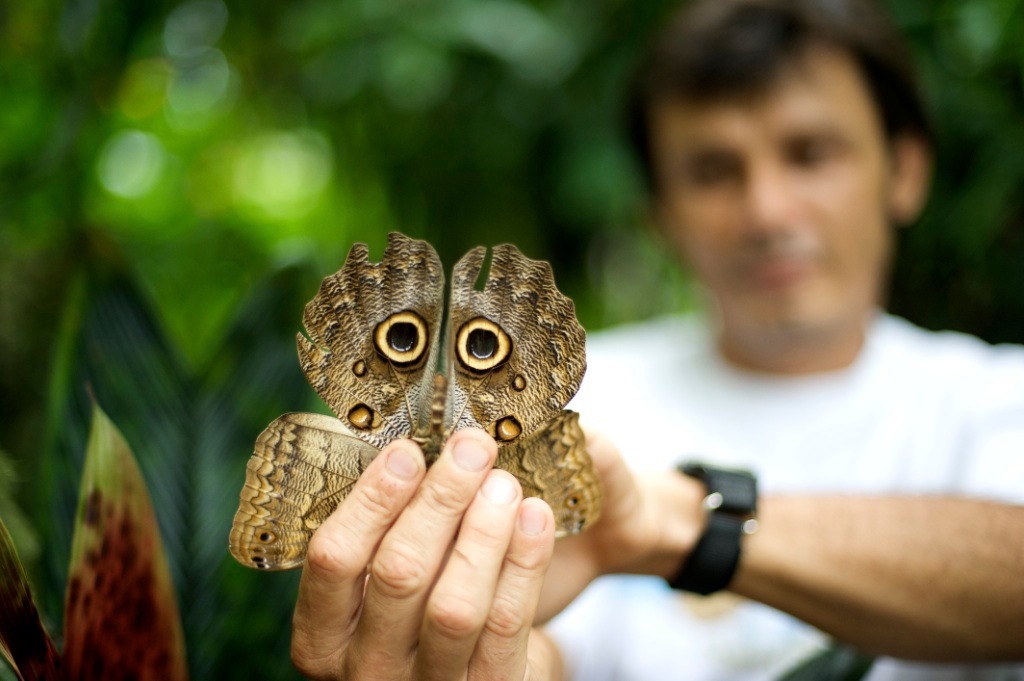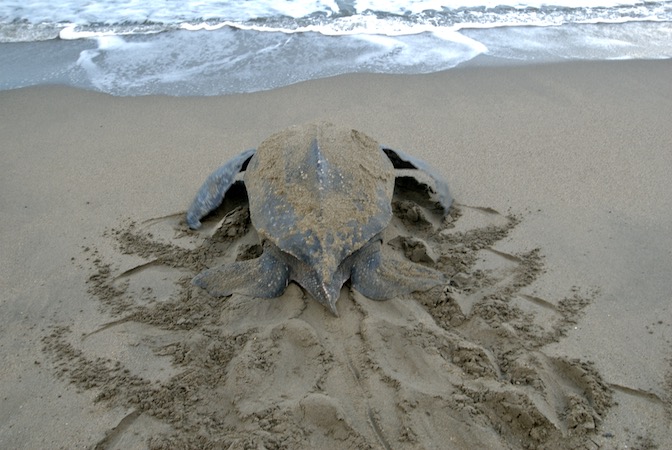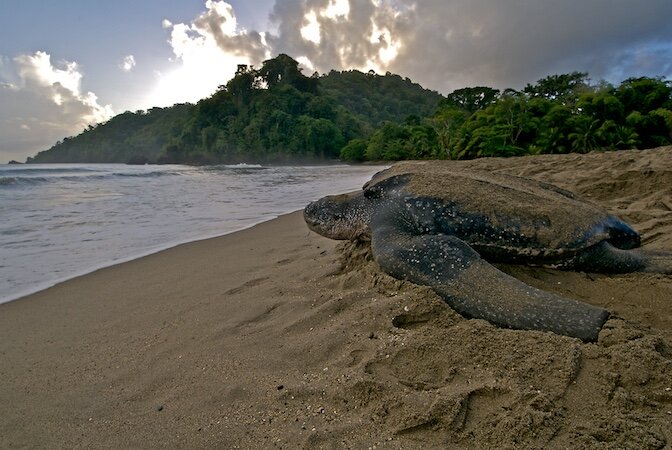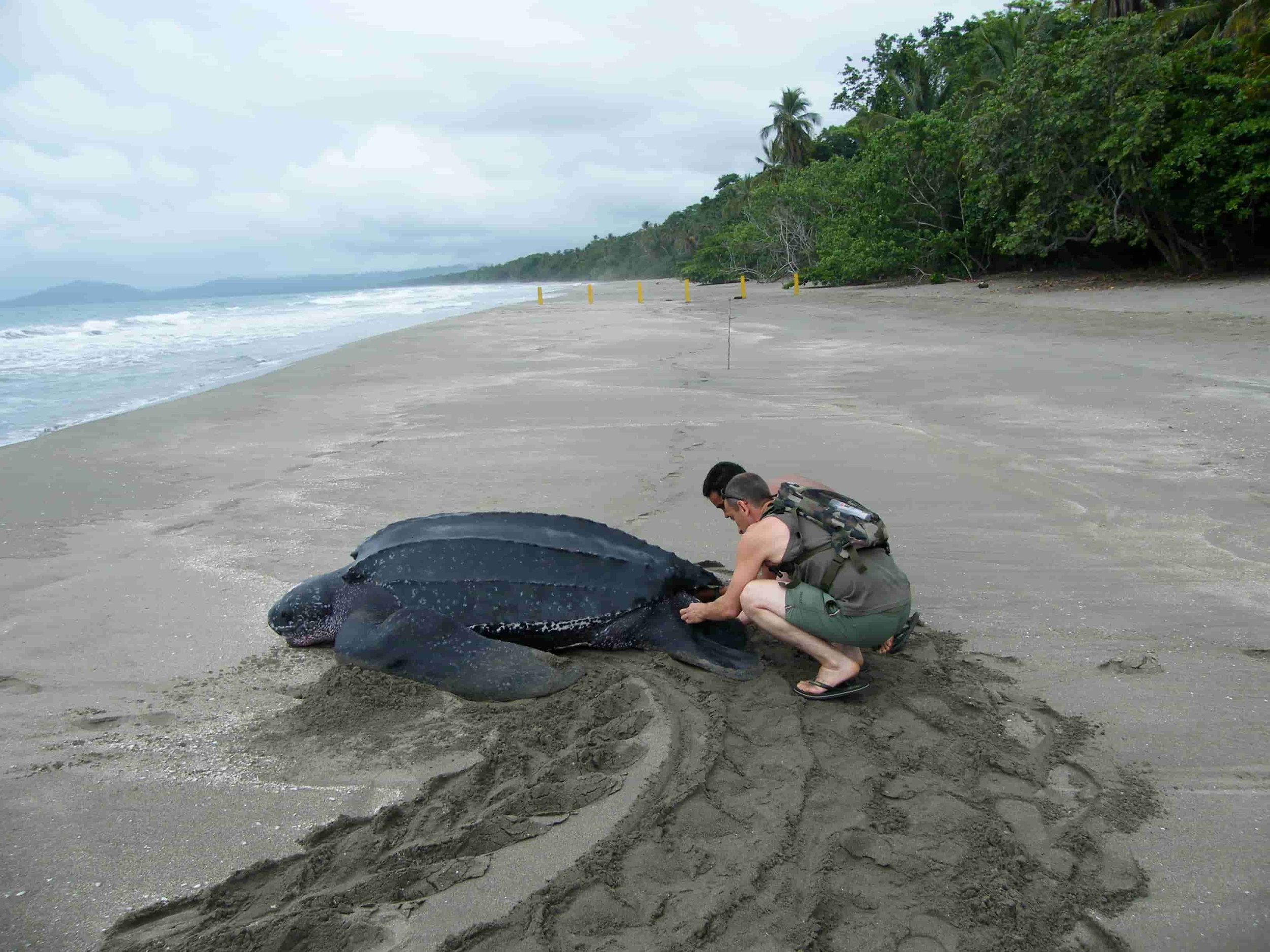
Costa Rica Leatherbacks
The leatherback is one of nature’s truly unique creatures. Their immense size boggles the mind; these turtles can average more than 6 feet long and 800 lbs. But that’s not the only thing that makes them unique. Their softer shell allows them to dive deeper than any other sea turtle and their size and dark color allows them to inhabit cold waters.
Spend 4 nights working with leatherbacks at a research station along Costa Rica’s northern Caribbean coast. The work includes walking the nesting beach at night, helping to measure the turtles, collect the eggs and move them to hatcheries, and working with hatchlings (later in the season). During the day, you can hang out on the beach or in a hammock, participate in a beach cleanup, visit the station’s turtle museum, or look for wildlife like monkeys, sloths, butterflies, birds, & more.
2024 Dates: May 18 - 24 (full)
Private trips for groups of 2 or more are available until June in addition to group dates below.
Price for scheduled trip: $1,995 per person
Private Trip Pricing: Depends on group size, starts at $2,395 for 2 people and ranges to $1,895 pp for 9+ people. Contact us for a price for your group.
Includes: In-country transport, meals, lodging, activities, guides, and a donation to turtle conservation.
Excludes: Airfare to Costa Rica, personal items, and tips for the guide and driver (tipping recommendation is $100 - $130 per person).
Animal List:
Will SEE: Leatherback sea turtles (nesting females), several species of butterflies, many species of birds (shorebirds & tropical birds)
Probably Will SEE: Leatherback hatchlings (mid-May and on), sloths, poison dart and red-eyed tree frogs
May SEE: Howler monkeys, caiman, basilisk lizard (aka Jesus Christ lizard)
Chance to SEE: Green or hawksbill turtles, crocodiles
Notes:
Private dates available for groups of 2 or more March through June and the itinerary can be customized to fit your group's needs.
We need at least 4 travelers total for the listed dates to confirm the trip.
Minimum recommended age is 8 years old, under 18 needs to be accompanied by an adult.
Discounts Available: $50 off for kids under 18 years and $40 for paying by check.
* Please note: We give 100% refunds on any trips that we need to cancel and our cancellation fees (when travelers cancel) can be used on a future trip, no expiration or penalties, except for cancellations made within 60 days of travel. See our full terms and conditions.
Payments can be paid monthly or in two bulk payments. Final payments are due 60 days before departure.
Contact us to:
Be added to the wait list
Inquire about private trips
Ask a question
Why Travel With Us?
All profits support conservation efforts
Work directly with local researchers
Unique experiences
Personalized service
ITINERARY
DAY 1 - ARRIVE TO COSTA RICA
Start your leatherback adventure by arriving to San Jose International Airport (SJO) anytime on the first scheduled day. Our guides pick you up from the airport and take you to La Rosa del America, a comfortable hotel in downtown San Jose. Get a good night’s sleep tonight, as the adventure starts early the next day. (Dinner the first is not included)
DAY 2 - LEATHERBACK RESEARCH
Today you will head out to the Caribbean coast to stay at a remote research station in the rainforest. First, wake up with a delicious Costa Rica breakfast buffet of eggs, gallo pinto (their famous breakfast rice and beans), fresh tropical fruit, delicious coffee, and more. After breakfast, board the private bus for a 4 hour ride to the Caribbean coast. You’ll pass through the country’s largest national park and then descend to the Caribbean lowlands.
The bus will drop your group at a small dock along the Tortuguero canals, where a boat will meet you to take you to the research station. The short boat ride passes through rainforest, so keep your eyes out for monkeys, sloths, toucans, and more along the way. Once you arrive, settle into your cabin and later, the researchers will give a presentation on sea turtles and the more than a decade of work that has gone into protecting this nesting beach. After dinner, you will head out for your first night of patrolling, accompanied by researchers who will guide you along the beach, spot the turtles, and help with the data collection. (B, L, D)
Please note: The station is fairly remote and isolated. The rooms are very basic and volunteers are expected to participate in cleaning up dishes after meals. The station has limited electricity, no hot water, and no internet. Bathrooms are basic and semi-private (shared between two rooms). Meals are simple and often include a meat like chicken or beef along with rice and beans, cabbage salad, and plantains. The station is in the rainforest, which can mean insects in the rooms (mosquito nets are provided).
DAYS 3 - 5: TURTLE RESEARCH
For the next three nights, you will spend four hours each night walking the nesting beach in search of the giant leatherbacks. Years of hard work protecting these turtles has resulted in increases in nests in the Caribbean and the leatherback was downlisted from critically endangered to vulnerable in 2013. But despite this success, their numbers are still declining and protecting their nesting beaches is vital to their long-term survival.
The first thing you notice when a leatherback is nesting is their giant tracks, which look like a monster truck has driven up the beach. Tasks involved in the research include measuring the turtles’ length and width (no small task with a giant turtle!), moving the eggs to a hatchery (where they are protected until hatching), and observing the condition of the turtles, looking for scars or injuries. From mid-May to June, you will have a chance to work with hatchlings, helping to do some basic research (measuring and weighing) and releasing them to the water. Green turtles also occasionally nest late in the season.
During the day, there is plenty of downtime to catch up on sleep, read a book, or walk along the beach. We do not recommend swimming at this beach however, due to strong ocean currents that can be dangerous. Planned daytime activities include a boat ride on the rainforest canals to look for wildlife including birds, sloths, monkeys, & caiman and a beach cleanup activity (even remote beaches have trash wash ashore). (B, L, D)
DAY 6 - CENTRAL VALLEY
This morning after breakfast, you will catch the boat back to meet your bus. Along the way back to San Jose, you will visit Jardin Pierella, a unique butterfly farm, to learn about these fascinating insects and other wildlife. You will see hundreds of butterflies, poison dart frogs, giant walking sticks, and likely sloths and other wildlife. The wonderful family who runs this farm will prepare a delicious traditional lunch. After a final group dinner on the town, head to bed early to be awake in time to go to the airport for your flight the next day. Overnight at La Rosa del America. (B, L, D)
DAY 7 - DEPARTURE
Return home with a new appreciation for the hard work of conservation and to share your experiences or extend your stay and explore other parts of this beautiful country. You will be taken to the airport in plenty of time to catch your flight. (B)
Similar Trips:
Testimonial
"A well-run and unforgettable trip! For any one who is looking to make a difference in conservation, explore a new culture, and/or go on an adventure in the process, then this trip is for you." - Noelle R.
Is This Trip Right For Me?
SEE Turtles offers trips for people with a spirit of adventure. Costa Rica is a safe and beautiful country that receives more than 1 million international tourists annually. This trip goes off the beaten path for 4 nights at the rustic and remote Las Tortugas Research Station. This is an active trip that requires a level of physical fitness and an ability to manage sometimes challenging conditions including weather and heat, bugs, and a schedule that can affect sleeping patterns. Electricity at the station is limited (solar panels) which means no air conditioning or hot water, there is no access to wifi or cell phone service, and meals are simple and basic and vegetarians can be accommodated.
OTHER TURTLE CONSERVATION TRIPS
Photo credits: Neil Ever Osborne, Hal Brindley


